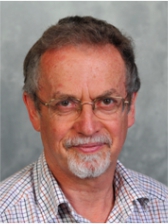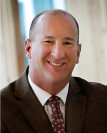INVITED LECTURES
Jacob Klein, Weizmann Institute of Science
Tentative title: Molecular mechanisms of biological lubrication
Jacob Klein, born 1949, is the Herman Mark Professor of Polymer Physics at the Weizmann Institute in Israel. He gained his BA in Physics at the University of Cambridge, where in 1977 he also received his M.A. and PhD at the Cavendish Laboratory. He did his postdoc at the Weizmann Institute in Israel, and from 1980-1984 was a Senior Scientist at the Weizmann Institute and a University Demonstrator at the Cavendish Laboratory. In 1984 he was appointed Professor at the Weizmann Institute (full Professor from 1987), and subsequently headed its Polymer Research department and was Chairman of its Scientific Council. From 2000-2007 Klein was the Dr. Lee’s Professor of Chemistry at the University of Oxford and Head of its Physical and Theoretical Chemistry Laboratory (2000-2005). His interests in soft matter have ranged from the dynamics and interfacial properties of polymers to the behaviour of confined fluids and biological lubrication, and, more recently, tissue engineering. His honours include the Charles Vernon Boys Prize of the Institute of Physics, UK (1984), the High Polymer Physics Prize of the American Physical Society (1995), the 2010 Prize of the Israel Chemical Society, the 2011 Soft Matter and Biophysical Chemistry Award of the UK Royal Society of Chemistry and the 2012 Tribology Gold Medal. In 2013 he was elected to the Academia Europaea.
Webpage

Jeffrey A. Weiss
Professor of Bioengineering
Adjunct Professor of Orthopaedics and School of Computing
Faculty Member, Scientific Computing and Imaging Institute
University of Utah
http://mrl.sci.utah.edu
Title: Interaction of Angiogenic Microvessels with the Extracellular Matrix
The motility and proliferation of angiogenic neovessels are modulated by the material properties of the extracellular matrix (ECM). Neovessels also modify the material properties of the ECM as they migrate through and interact with the ECM. This creates a dynamic feedback loop in which angiogenesis is coupled with deformation and remodeling of the ECM. In this talk, I will discuss our experimental and computational research to investigate the this phenomenon. The experimental aspects of the research are based on a 3D in vitro organ culture model of sprouting angiogenesis. The computational approach is based on coupling a validated model of angiogenic growth with the FEBio finite element software framework developed in our laboratory (www.febio.org). In these studies we demonstrate that angiogenic neovessels extensively deform and remodel the ECM through a combination of cellular traction forces, proteolytic activity and generation of new cell-matrix adhesions. Sensitivity analysis using our computational model demonstrated that cell-generated traction during growth is the most important parameter controlling the deformation of the matrix and therefore angiogenic growth, remodeling and morphometry of the resulting microvascular bed. Live, large-scale mulitphoton imaging elucidated several neovessel behaviors during angiogenesis that are poorly understood such as episodic growth/regression, neovessel co-location, and anastomosis. The combined approach has allowed us demonstrate that angiogenic growth and the resulting topology of a vascular network can be manipulated directly by altering the mechanical interactions between cells and the ECM.
CV for download
Web page: Musculoskeletal Research Laboratories

Marcus Pandy
Marcus Pandy is appointed as Chair of Mechanical and Biomedical Engineering in the Department of Mechanical Engineering at the University of Melbourne. He received a PhD in mechanical engineering from the Ohio State University, Columbus, Ohio, U.S.A. Prior to joining the University of Melbourne he was appointed as the Joe J. King Professor in Engineering in the Department of Biomedical Engineering at the University of Texas at Austin. Dr Pandy’s research is focused on combining biomechanical experiments and computational modelling to describe and explain musculoskeletal function in the healthy, injured and diseased states.




Home | Sitemap | [email protected]
© 2014 esbiomech2015.org | By E-WORKS - web studio | XHTML 1.0 | CSS 2